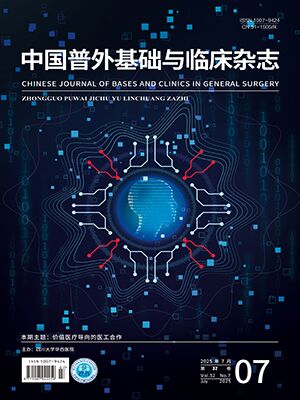Objective To explore the treatment of thromboangitis obliterans (TAO) of lower extremities.
Methods From March 1994 to February 2009, 24 cases (26 limbs) affected by chronic ischemia were diagnosed as TAO by Doppler ultrasound and DSA, CTA or MRA. According to the different levels of the extensive and diffuse arterial occlusion, the revascularization was performed in the ways: 19 cases (21 limbs) underwent venous arterialization, 3 cases (3 limbs) underwent endovascular therapy, and 2 cases (2 limbs) underwent thrombectomy.
Results After the venous arterialization, 19 cases (21 limbs) were followed up for 1 to 14.5 years. Apart from the 5 limbs amputation (23.8%), the postoperative results of the most limbs were satisfactory (61.9%). The ABI before therapy (0.38±0.11) was significantly lower than that 6 months after therapy (0.79±0.08), P lt;0.05. In 3 cases (3 limbs) underwent endovascular therapy, one case failed and then received the venous arterialization. Two cases (2 limbs) finished thrombectomy successfully. After endovascular therapy and thrombectomy, these 4 cases were followed up for 1 to 4 years without the amputation.
ConclusionIn order to improve the curative effect, it is important to choose the suitable therapeutic strategy according to the different levels of the extensive and diffuse arterial occlusion. The venous arterialization is an effective treatment for TAO of lower extremities.
Citation: CHEN Xingsheng,LIN Ting,GUANG Yunbiao,LI Nan.. Therapy of Thromboangitis Obliterans of Lower Extremities. CHINESE JOURNAL OF BASES AND CLINICS IN GENERAL SURGERY, 2010, 17(7): 653-655. doi: Copy
Copyright © the editorial department of CHINESE JOURNAL OF BASES AND CLINICS IN GENERAL SURGERY of West China Medical Publisher. All rights reserved




